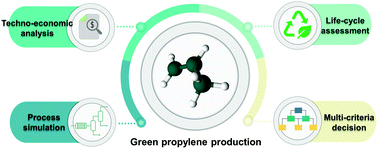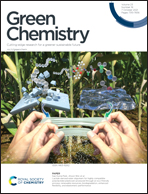What is the best green propylene production pathway?: technical, economic, and environmental assessment†
Abstract
Owing to the increasing demand for propylene, many propylene production pathways have been developed, such as naphtha catalytic cracking, olefin metathesis, propane dehydrogenation, and methanol to propylene (MTP) conversion. As environmental regulations become more stringent, green propylene should be explored to enhance sustainable production and reduce CO2 emissions. MTP conversion through CO2 hydrogenation (indirect MeOH synthesis) and CO2 electrolysis (direct MeOH synthesis) has been explored as a green propylene production pathway. To evaluate the possibility of green propylene production from technical, economic, and environmental perspectives, process simulation, economic analysis, and environmental assessment were performed for MTP conversion via indirect and direct methanol synthesis. Furthermore, the best alternative for green propylene production was determined via an analytic hierarchy process, considering technical, economic, and environmental aspects, at the same time, with different weighted values of each criterion, under uncertainty. Our results indicated that MTP via direct MeOH synthesis was superior in cases where the environmental impact is the most important, while MTP via indirect MeOH synthesis was the most appropriate alternative for green propylene production, with the technical and economic impacts being more critical than the environmental impacts.



 Please wait while we load your content...
Please wait while we load your content...